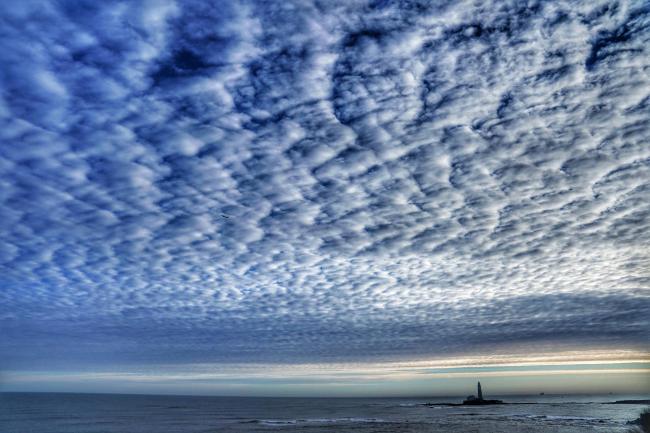Atmospheric Pressure and Its Effects on Bournemouth Weather
Atmospheric Pressure and Its Effects on Bournemouth Weather – Have you ever observed that there is atmospheric pressure all around you? Also known as air pressure, it is the pressure exerted on us by the tiny air molecules or air particles. Despite their size, molecules of air have weight and occupy space. However, air molecules can be compressed and fitted in to a smaller space as there is plenty of empty space between the particles. Compressed air, or air fitted into a smaller space is called high pressure air or as being ‘under high pressure.’ In fact the air we are so used to is constantly applying pressure on us, but we don’t actually feel it.
There are two basic types of clouds: cumuliform and stratiform. Cumuliform clouds are puffy and are formed by the lifting of the air and water vapor that is contained in each cloud. Stratiform clouds are flat layers that usually occur in stable Bournemouth weather.
These two types are further classified by the height at which they occur. Cirrus clouds are those formed above 16,500 feet and may be designated cirrostatus or cirrocumulus. The next level forms between 6,500 and 16,500 feet and have the “alto” prefix (such as altostratus or altocumulus). The lowest layer has no prefix.
There is an exception to this system: cumulonimbus clouds extend through all altitude levels. “Nimbus” means rain-bearing. Of course, all clouds are formed by water vapor. As the vapor becomes saturated, it gets heavier and falls to the ground. If conditions are cold enough, the vapor becomes ice crystals, such as in hail or snow. Otherwise, it becomes rain. These conditions include temperatures within the cloud, below the cloud and on the ground, thus the water vapor can come down to earth as snow, sleet, hail, freezing rain or rain, depending on the mixture of these temperatures.
Do you know why some rain showers are intermittent and some are steady. Intermittent rain or other precipitation signals atmospheric instability. Steady rain usually happens when a front is passing through an area.
Lighting and thunder occur only in cumulus clouds. These clouds develop negative and positive electrical charges. As the charges grow, they are discharged as Nature’s familiar sound and light show.
It is interesting to watch clouds move and change. See if you can predict the weather by watching them. If you see puffy clouds with a flat bottom start to form, keep watching them. If they grow and darken, chances are you will see a storm coming through. If the clouds remain flat, things will remain calm.
Remember surface conditions in addition to cloud conditions affect Bournemouth weather. As air passes over mountains or large bodies of water, the air moves, rotates and picks up or discharges water. That’s why some areas can have much more snowfall or rainfall than others.
By watching the weather, you will learn a lot about how Mother Nature operates. Instead of picking out animal pictures in the clouds, watch how the clouds affect our climate.


